New Pickguard Finish Fill
© Frank Ford, 11/23/99; Photos by FF, 11/21/99
Until around 1985, Martin's habit was to glue the pickguard directly to the top, then finish over the top, pickguard and all. Gibson, Guild and other makers also used this technique for installing pickguards. Whenever possible, I like to reglue pickguards that were originally glued to the wood before the top was finished. But that's not always possible. Sometimes, they've just curled up too badly, or have shrunken and fallen off, or were simply lost.
Here's a 000-18 with a terribly curled pickguard:
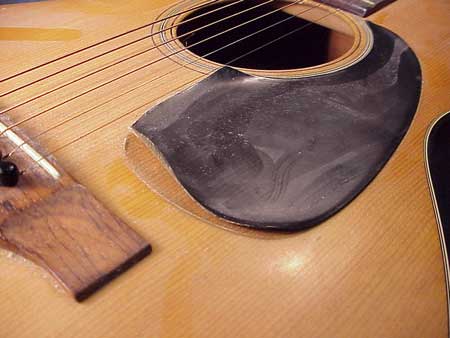
Look like a black potato chip! No chance of regluing this one, because it cracked a bit just as I pressed the curled end down. It's also badly shrunken so it would look pretty rough if reglued.
I'll just take it off in the usual manner, watching for grain runout:
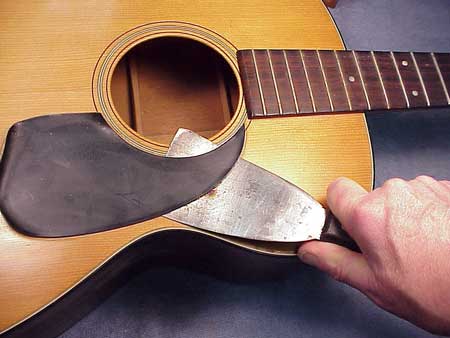
Once the pickguard is off, I need to build up that bare spot to the level of the surrounding finish. The lacquer finish is around .006" thick, so if I glue on a new pickguard, it won't look level if it bridges the border between the finish and the bare spot. And, the adhesive I'll use on the new guard won't stick as well to bare wood as to a level finish.
I could mask and spray the top with finish, but I find it much easier to brush new lacquer on:
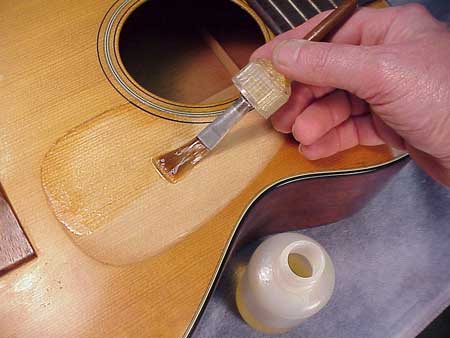
It takes several applications over a few days, but each application takes almost no time at all, and with my little brush and bottle, I have no cleanup or masking to do.
I try to brush just a little over the line, so I blend the new and old finishes"

I'll switch to a D-28 that's been drying for a while so you can see the rest of the job:
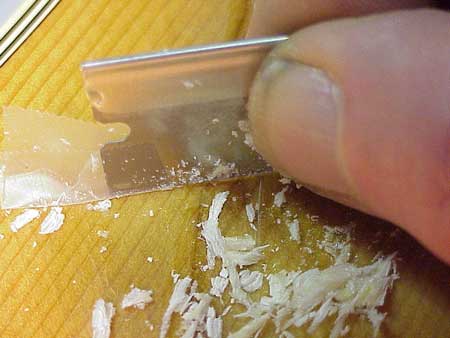
Here, I'm using my little razor blade scraper to level the margins of the finish where new meets old.
Wet sanding with a cork block to level the area:
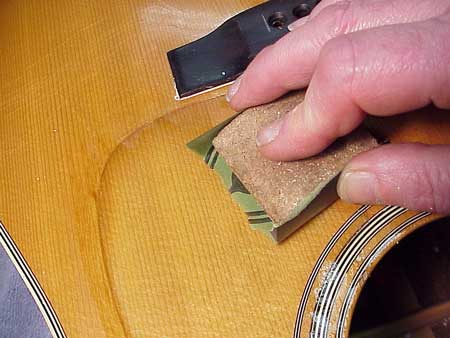
Now, it's all buffed and ready for a new pickguard:
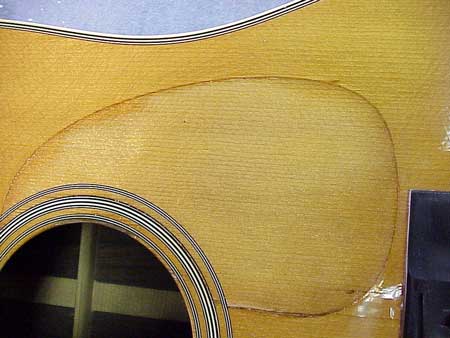
Click here for a trip through the new pickguard process.